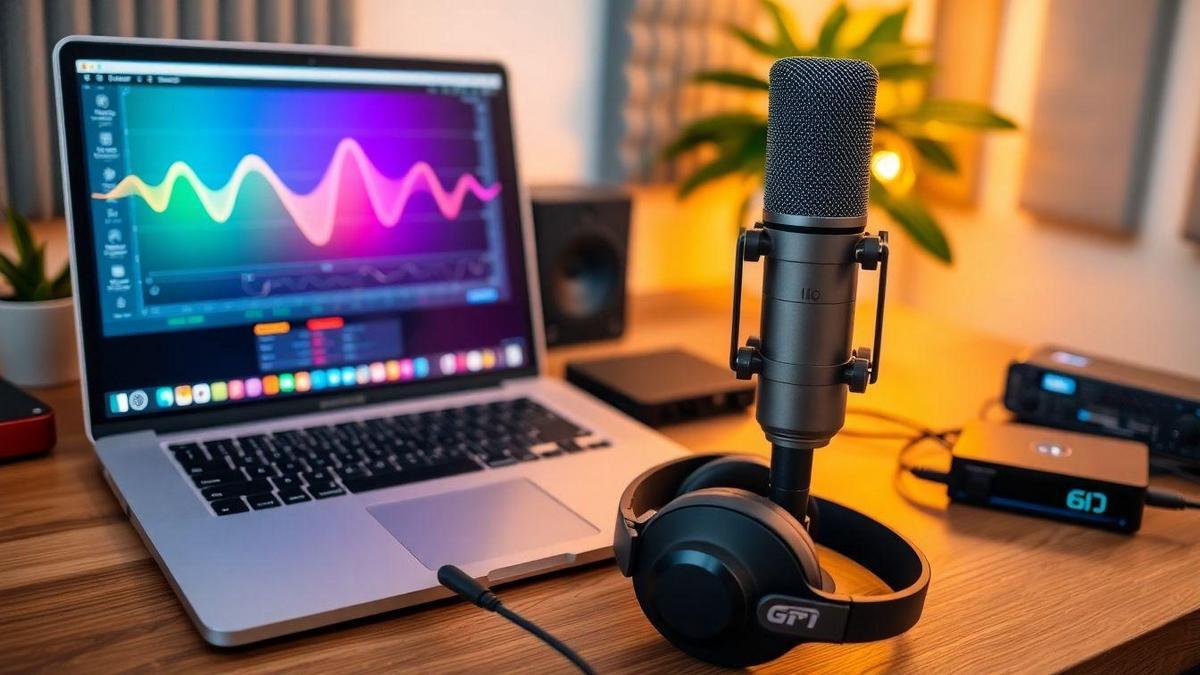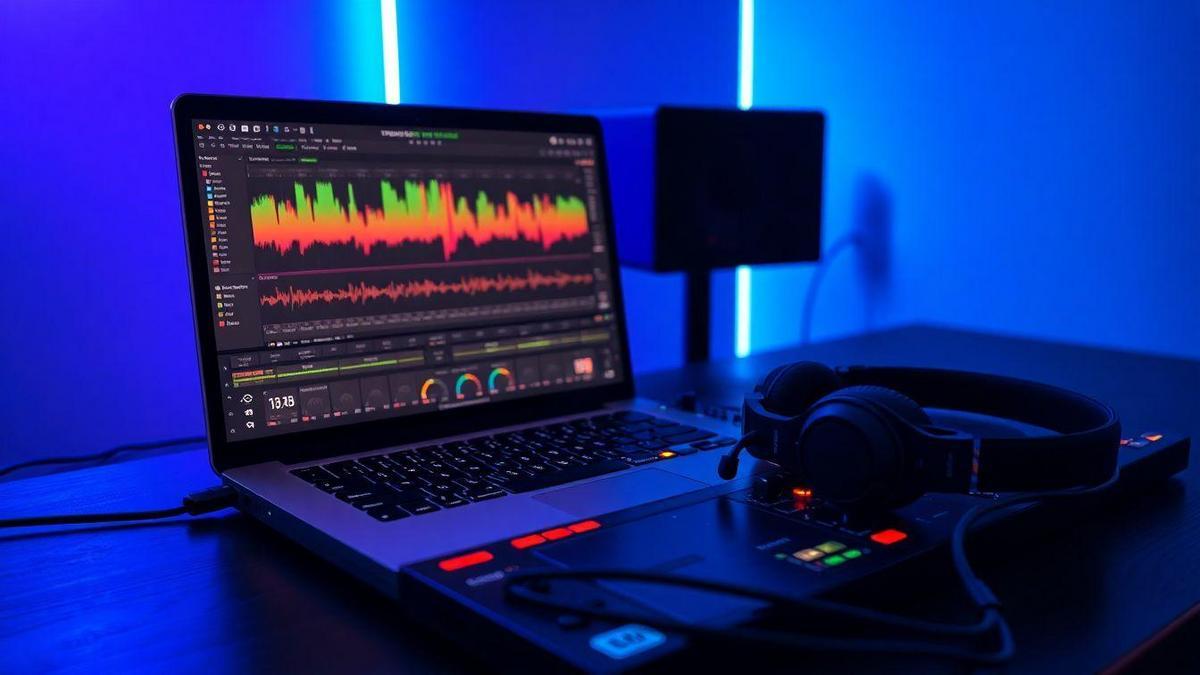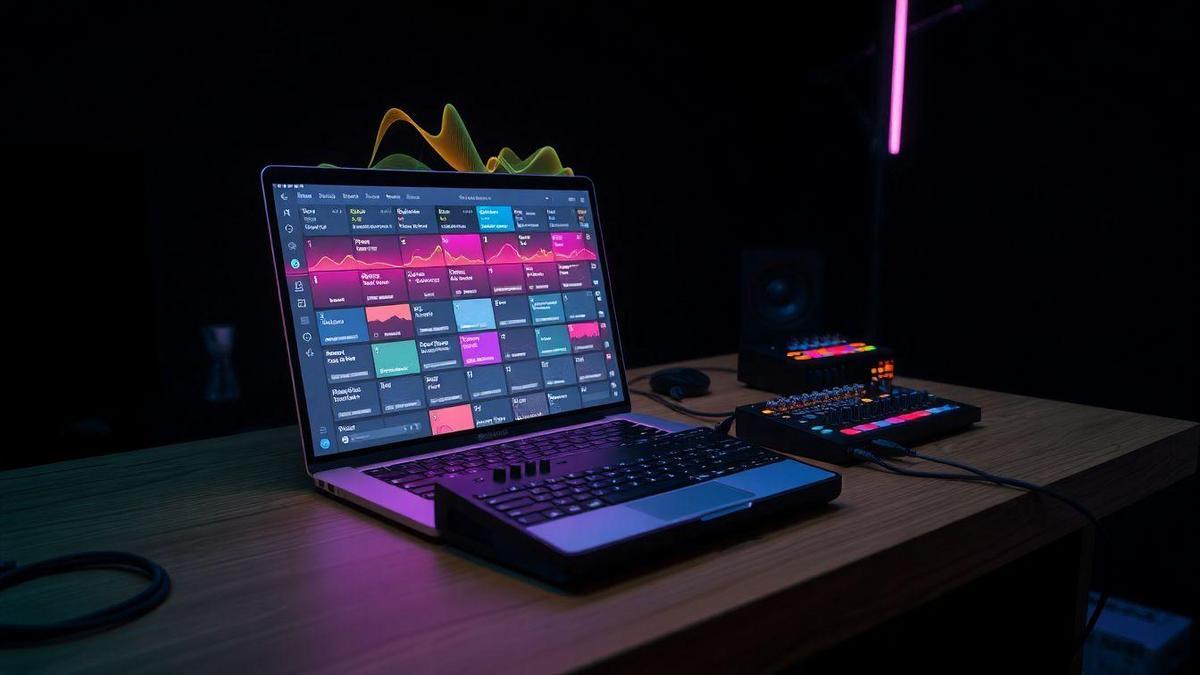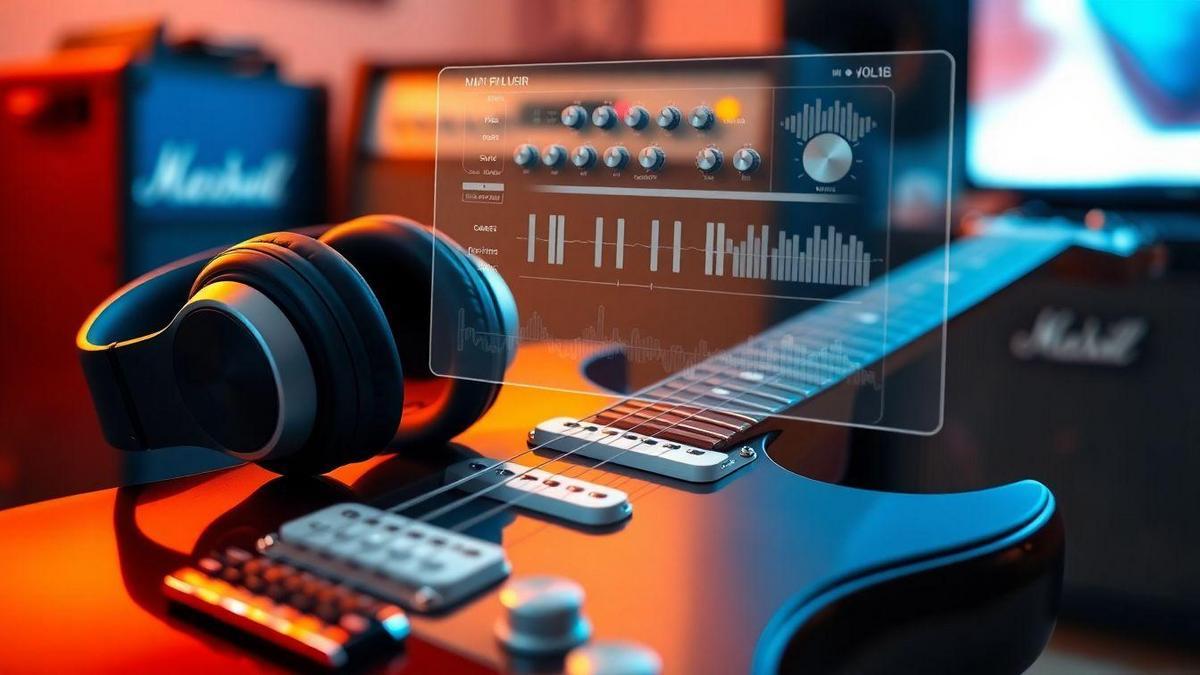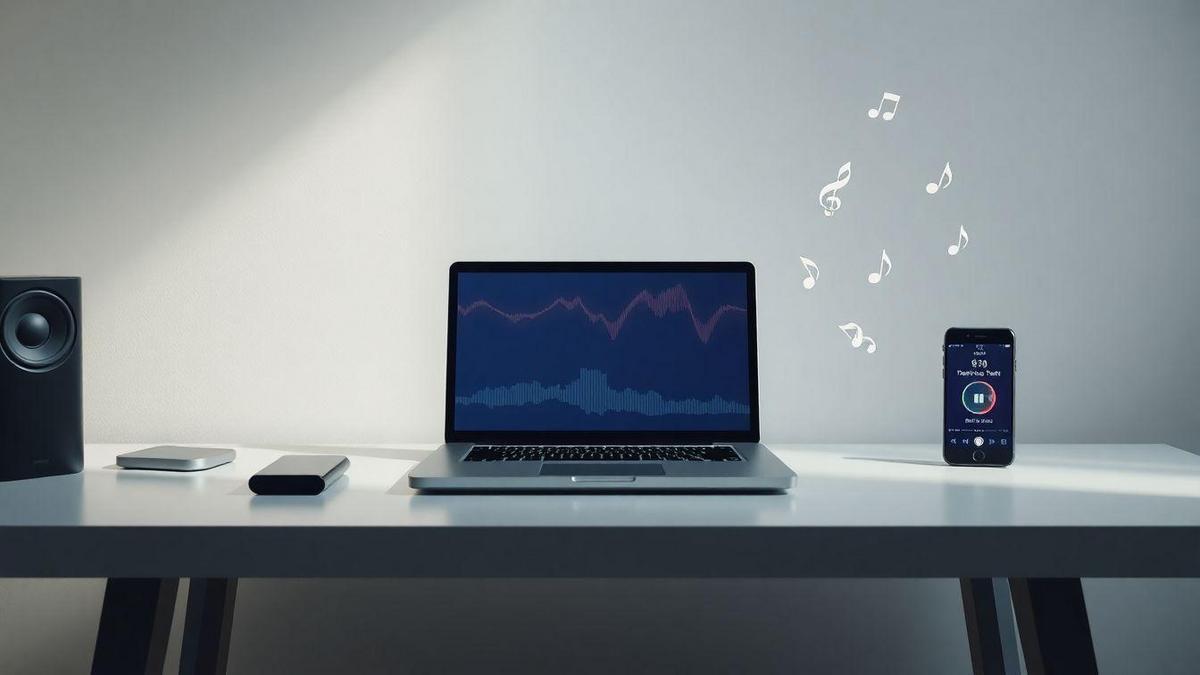vocal tuning software for home studio singers with natural pitch correction is what you’ll learn about in this guide. Sambizanga Musik walks you through what these tools do, from pitch detection and note editing to formant control and low latency tracking. You’ll get clear help choosing between automatic, manual, real‑time, and mobile options, picking plugins that stay transparent and natural, and testing CPU load and trial demos. Expect simple DAW workflows for tracking and offline editing, tips to preserve your voice and cultural expression, and smart rules for when tuning helps and when it hides problems.
Key Takeaway
- You get simple, tested tuning workflows from Sambizanga Musik
- You keep your vocal character by using gentle tuning
- You pair tuning with a clean recording and decent mic
- You use DAW‑friendly plugins in FL, Ableton, or Logic for fast results
- You avoid overprocessing to preserve authentic African styles
What vocal tuning tools do and how they help your voice
Vocal tuning tools catch and clean up pitch problems so your takes sound more confident. You record, then the software shows a visual map of your notes. From there you can nudge a flat note sharp, tighten a slide, or keep a vocal phrase expressive. For you, that means fewer retakes and more time making music.
These tools also protect the character of your voice when you use them right. Modern plugins let you set how fast and how much correction applies, so you can keep breath, grit, and vibrato while fixing notes that pull listeners out of the song.
Sambizanga Musik recommends starting gentle: fix obvious pitch slips, then back off. Think of tuning like seasoning a soup — a pinch here and there brings out the flavor without hiding the main ingredient. Use your ears, compare before/after, and let the tool support your performance, not replace it.
“Small tweaks keep your character. Let the tool polish, not rewrite.” — Sambizanga Musik
Core functions: pitch detection, note editing, formant control
Pitch detection finds where your voice landed and shows it visually. Note editing lets you drag notes to pitch, tighten timing, or split phrases. Formant control preserves vowel color when shifting pitch so you avoid “chipmunk” or “metallic” artifacts.
- Pitch detection: finds notes
- Note editing: moves them
- Formant control: keeps vocal tone natural
How vocal tuning software for home studio singers with natural pitch correction detects pitches
Most tools read frequency over time from the vocal waveform. Techniques include FFT, autocorrelation, and newer machine‑learning approaches that handle tricky vowels and noise. For natural results, choose settings labeled “natural” or “transparent” and set a slower correction speed. Vocal tuning software for home studio singers with natural pitch correction works best with a clean dry vocal, the right key or scale, and light edits. Sambizanga Musik suggests A/B testing tuned vs raw takes and trusting small tweaks over big jumps.
Tip: Save a copy of the raw take before heavy edits so you can compare and roll back if needed.
Key terms you need to know: pitch, formant, latency
| Term | What it means | Why it matters |
|---|---|---|
| Pitch | Note height (C, D, E…) | Shows where to correct notes |
| Formant | Vocal color and vowel shape | Keeps the voice sounding natural |
| Latency | Delay in the signal chain | Affects timing and tracking feel |
Why you should use vocal tuning in your home studio
Using vocal tuning in your home studio speeds your workflow and lifts track quality. Tuning trims the rough edges so you can polish one good take instead of re-recording the same line ten times. It also helps you learn your own voice—small corrections reveal how timing and melody behave in the mix and improve future takes. Clean, tuned vocals glue a song together and let the emotion come through.
Tip: Start small. Fix obvious pitch dips first, then decide if a section needs more work to keep the performance natural.
Real benefits: cleaner takes, faster edits, and more confident vocals
Tuning saves time, stabilizes pitch for easier mixing, and produces stronger demos that attract collaborators.
- Faster edits and fewer comped takes
- More consistent timing and less re-recording
- Stronger demos that get taken seriously
Here’s a quick table to show common tuning options and where they help.
| Method | Best for | Speed | Natural sound |
|---|---|---|---|
| Automatic | Quick fixes, guide vocals | Fast | Medium |
| Manual | Detailed work, lead lines | Slow | High |
| Hybrid | Most sessions | Medium | High |
Visual: Speed vs Naturalness
.label { font: 12px sans-serif; fill: #222; }
.bar-speed { fill: #4CAF50; }
.bar-natural { fill: #2196F3; }
.axis { stroke: #ccc; }
Speed vs Naturalness (higher = better)
Automatic
Hybrid
Manual
Speed
Naturalness
Easy pitch correction for beginners: quick fixes without heavy learning
You don’t need a music degree. Modern vocal tuning software has simple modes that correct notes for you. Sambizanga Musik shows how to set the right key and scale so the plugin does most of the work. Look for tools labeled natural or transparent. Search for “vocal tuning software for home studio singers with natural pitch correction” to find plugins made for small studios.
When you first open a tuner, start with low correction strength and slower retune speed. If something still sounds off, switch to manual edit and nudge problem notes. Small moves often solve big issues.
When tuning helps and when it hides performance problems
Tuning helps when a take is honest but a few notes wander. It masks deeper issues (timing, breath control, phrasing) if overused. Use pitch tools to clean up, not to cover a take that needs redoing.
Which tool types to pick: automatic, manual, real‑time, or mobile
Match the tool to the job. Automatic plugins give instant results for demos. Manual editors let you redraw pitch and timing for leads. Real‑time tools work for live tracking but add latency and CPU load. Mobile apps capture ideas on the go. Desktop plugins (VST/AU) usually offer the best balance for home studios.
Think of the choices like kitchen knives: automatic = chef’s knife, manual = scalpel, real‑time = food processor. Pick based on whether you’re demoing, recording, or performing.
| Tool type | Best for | Control level | Typical latency | Quick example tools |
|---|---|---|---|---|
| Automatic plugins | Fast fixes, pop vocals | Low | Low–Medium | Antares Auto‑Tune, Waves Tune |
| Manual/visual editors | Lead vocals, natural pitches | High | None (offline) | Melodyne, Cubase VariAudio |
| Real‑time processors | Live shows, tracking | Medium | Dependent on interface | Antares Live, MAutoPitch |
| Mobile apps | Ideas, rough edits | Low–Medium | Varies | iOS/Android pitch apps |
Tip: For natural results, back off the retune speed and keep formant controls on. Small tweaks often sound better than big jumps.
Automatic pitch correction and choosing an autotune plugin for home recording
Automatic correction snaps notes to a scale. For a natural sound look for formant control, humanize settings, and adjustable retune speed. When searching, use the phrase vocal tuning software for home studio singers with natural pitch correction to filter results toward subtle algorithms and manual correction modes. Test demos with your mic and interface—your ear beats spec sheets.
Manual editors, visual editors, and Melodyne alternatives for home studio
Manual editors let you drag notes, adjust vibrato, and fix timing—ideal for natural lead vocals. If Melodyne isn’t an option, try Cubase VariAudio, FL Studio NewTone, or Reaper’s ReaTune. A common workflow: rough automatic pass, then polish by hand to keep the performance alive while cleaning pitch.
Desktop plugins (VST/AU), mobile apps, and standalone tools
Desktop plugins give full control in your DAW. Mobile apps are great for ideas but rarely match desktop quality. Standalone tools like Melodyne let you edit outside a DAW for deep work. Start with a desktop plugin for tracking, then use a manual editor for surgical fixes.
How to choose software: features, CPU load, and price
List what matters: transparent pitch correction, formant control, low CPU use, and price. When searching for “vocal tuning software for home studio singers with natural pitch correction,” focus on subtle algorithms and manual modes. Balance features against CPU load—some plugins are gorgeous but CPU‑hungry. Use free trials to test with your mic and system, and check upgrade paths and support.
Sambizanga Musik tip: always record a short take, load it into the trial plugin, and listen on good headphones. If the tuning sounds fake on that take, move on.
| What to check | Why it matters | Quick red flag |
|---|---|---|
| Transparent pitch correction | Keeps artifacts low and expression intact | Extreme auto‑tune effect by default |
| Formant control | Preserves vowel character when shifting pitch | No formant or gender shift control |
| CPU & latency modes | Lets you track without lag and mix without overload | High CPU with no low‑latency mode |
| Pricing & trials | Helps you test before you buy | No demo or restrictive trial limits |
Look for transparent pitch correction tools, formant control, and natural results
Transparency is the goal: correction should hide in the mix, not announce itself. Tools offering auto manual modes are ideal. Formant control is essential if you shift more than a semitone—dial it independently so the voice keeps its identity.
Compare affordable pitch correction software, free trials, and paid tiers
You don’t need the priciest option. Affordable plugins can deliver believable auto modes and good manual editing. Use trials to compare how each handles runs, breathy notes, and background noise. Entry‑level tiers may miss features like formant control or ARA sync—decide what you’ll actually use before buying.
Must-test checklist: latency, presets, CPU use, and trial demos
Before you commit, run these tests in a real session:
- Track with low‑latency mode and note any lag
- Load genre presets and tweak them
- Monitor CPU during heavy editing
- Run the full trial on a vocal with runs, breaths, and hiss
Set up your DAW and follow the best vocal tuning workflow at home
Start with a clean signal: good mic, solid preamp, input peaks around −6 dB. Use 44.1 or 48 kHz. Create tracks for raw, tuned, and a dry backup. Track chain: high‑pass, light compression for level control, and a gentle de‑esser. Record multiple takes and comp the best phrases before tuning.
Workflow: comp → clean → tune (automatic light pass) → manual polish for tricky bits. Keep a backup of raw takes.
Checklist to start fast:
- Mic, interface, pop filter, headphones
- Set input level to peak ~ −6 dB
- Buffer 64–128 samples for tracking
- Record multiple takes and comp before tuning
- Keep a backup of raw takes
Tip: save an extra copy of the session before heavy edits. If tuning strays, you can always roll back.
Real‑time pitch correction for singers while tracking and low‑latency tips
Real‑time correction helps singers feel confident. Use plugins with a low‑latency or live mode, set correction strength low, and retune speed moderate. Avoid harsh fast retune that sounds robotic. On Windows use ASIO; on Mac use Core Audio. Drop buffer to 64 samples or lower if CPU allows. Disable heavy buses and instruments during tracking. If needed, enable direct monitoring and create a separate low‑latency cue mix with the correction plugin.
Callout: If you still get delay, enable direct monitoring on your interface and use a separate cue mix with the correction plugin on a low‑latency path.
Offline note‑by‑note editing and using a vocal tuning plugin for DAW
Edit offline methodically: mark problem notes, adjust whole‑note pitch, then fix drift and vibrato. Keep formants unless you want a special effect. Duplicate the track and do surgical edits on the copy; blend with the original to keep life in the performance. Set the plugin to the song’s key/scale. Don’t fix every wobble—preserve character and compare bypassed sections often.
“Trust your ears more than the green dots.”
A tuned vocal must feel real, not perfect.
Plugin hosting tips for FL Studio, Ableton Live, and Logic Pro X
- FL Studio: use the Plugin Wrapper, set buffer 64–128, use ASIO drivers.
- Ableton Live: enable Delay Compensation and use VST3 where possible; avoid complex racks while tracking.
- Logic Pro X: use Low Latency Mode and I/O buffer ~64; freeze or bypass heavy plugins during recording.
| DAW | Recommended Buffer for Tracking | Quick Tip |
|---|---|---|
| FL Studio | 64–128 samples | Use Plugin Wrapper and your interface’s ASIO driver |
| Ableton Live | 64–128 samples | Turn on Delay Compensation, avoid complex racks |
| Logic Pro X | 64 samples | Use Low Latency Mode and freeze tracks as needed |
“Keep the soul of the voice first. Tech should help the story, not steal it.”
Keep your voice real: preserve culture, vibrato, and expression
Think of pitch tools like glasses, not glue. Don’t let a grid flatten bends, microtones, and breath that make a phrase feel alive. Use correction sparingly: small pitch corrections, formant protection on, and slow attack times so vibrato breathes through. If using vocal tuning software for home studio singers with natural pitch correction, choose settings that keep vowel tone and phrasing. Record with feeling first—fixing emotion later is hard.
Build a workflow that keeps culture front and center: record several takes, comp the best lines, and only tune notes that slip. Automate tiny changes instead of a global fix. Blend some raw takes with tuned ones to preserve humanity.
Note from Sambizanga Musik: keep a reference of traditional singers you admire. Compare often. Your ears will tell you when the voice still belongs where it came from.
Tips to protect formant, vibrato, and African and diasporic vocal identity
Protect formants so vowels stay true—use plugins with formant control or a preserve formant switch. Make micro‑edits around note centers and leave edges so vibrato and transitions remain. Respect ornamentation and microtonal moves: avoid forcing expressive slides into a strict Western scale. Edit note by note when needed and preserve meaningful note drift.
Creative uses: automatic harmony generator plugin and tuning as an effect
Automatic harmony generators can act like a choir director—choose intervals that suit your style and use formant shift to keep harmonies natural. For creative effects, heavy tuning can give a modern, otherworldly vibe—try doubling with one raw take and a heavily tuned double for texture.
When to stop: signs of over‑processing and how to stay natural
Signs you’ve gone too far: vibrato sounds like a zipper, vowels thin out, consonants drag, or emotion disappears. If the voice feels cold or synthetic, reduce correction by 20–30% or blend in untreated audio at low level. Do quick A/B checks: raw → tuned → mix. Trust the song over presets.
Quick checklist: compare raw vs tuned, keep formant protection on, edit transitions not entire notes, and blend raw/tuned takes.
Conclusion
You’ve got the map. Use clean recording, the right workflow, and gentle tuning to polish, not replace, your performance. Think of pitch correction like seasoning — a pinch brings out the flavor; too much hides the dish.
Start simple: record well, set the song key, choose a transparent plugin, back off the retune speed, and protect formants. Do an automatic pass, then go manual for tricky bits. Trust your ears over presets. Small edits keep vibrato, breath, and cultural nuance intact.
Know when to stop. If the voice sounds stiff, robotic, or thin, you’ve crossed the line. Use tuning to fix slips, not to cover timing or phrasing problems. Blend raw and tuned takes when you need life in the lead.
Try demos, run the must‑test checklist, and pick tools that fit your CPU and budget. With practice, vocal tuning software for home studio singers with natural pitch correction becomes a tool that helps you sing better, not a crutch that rewrites you.
Want more practical tips and tested workflows? Read more at https://sambizangamusik.com.
Frequently asked questions
Q: What is vocal tuning software and why use it at home?
A: It fixes small pitch slips fast so you keep your vibe and make vocals sit in the mix. Sambizanga Musik shows simple steps for real‑sounding fixes.
Q: Which tools work best for vocal tuning software for home studio singers with natural pitch correction?
A: Try a light autotune mode for speed, or manual editors for subtle work. Sambizanga Musik tests free and paid picks that sound natural.
Q: How do you make tuned vocals sound natural?
A: Tune gently. Preserve vibrato and formants. Use manual edits for tricky notes. Add EQ and soft compression. Listen on earbuds and monitors.
Q: What gear and DAWs do you need to tune vocals at home?
A: A decent mic, audio interface, and quiet room help a lot. FL Studio, Ableton Live, and Logic Pro X all work. Sambizanga Musik provides step‑by‑step setups.
Q: Do you need music theory to tune vocals?
A: Not much. Know the song key and basic notes. Sambizanga Musik teaches quick tips so you can tune with little theory and still sound pro.

